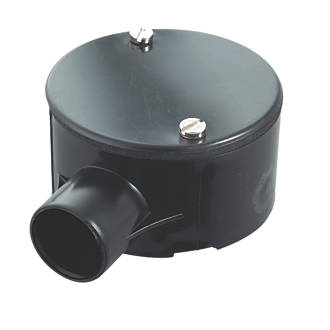Hi all
Long time lurker but first post here
I've purchased a property built in the 80s which has fairly standard cavity wall construction (my previous experience is on an older single skin brick property which is a little easier to work with for external cable entry)
I'm looking to install a few network points, 2 in my upstairs office, one in the living room, and one in the loft to run down to a wireless access point in the ceiling of the upstairs hallway. I want to run the cables external to the property to avoid any major replastering and then pass them all through the wall into a cupboard where my patch panel + network switch will be located. I'm also looking to run a couple of network cables out to the garage but i'll probably handle that at a later date once I figure out how the electrics get to the garage (!) I hope thats been done properly at the time of construction as the garage is the same age/style at the house so was likely done by the original builder but you never know ...
From reading around online it seems the best way to handle this is to use a PVC conduit in the wall. It seems 20mm is the standard size for this sort of job which according to the following calculator will allow 5x CAT5 cables (6mm dia) to pass through its 17mm internal diameter https://www.engineeringtoolbox.com/smaller-circles-in-larger-circle-d_1849.html - potentially I could squeeze 6 through if I really tried!
I intend to purchase the following
20mm PVC conduit
20mm PVC conduit entry (for outside the property)
https://www.screwfix.com/p/masterse...gclsrc=aw.ds&dclid=CIyl9PugltgCFcZxGwodY5wJfA
A reel of Cat5e external grade cable
I have an SDS drill and the following bits:
8x460mm
20x460mm
22x460mm
25x460mm
For the cupboard, I intend to drill through the wall with the 8mm, then work my way up through the bits until the conduit fits through - hopefully as close to 20mm as possible! Then seal up the end of the conduit with the PVC entry rubber plug and mastic round any gaps.
For the sockets in the rooms I will use an 8mm hole through to a surface mount RJ45 box on the inside wall and mastic round and clip the cables roudn the property externally.
Can anyone advise if they have attempted this kind of thing before? I think i'm OK with the boxes in the rooms it's just getting multiple wires through a wall that i'm not sure about (using a conduit etc)
Thanks in advance
Ben
Long time lurker but first post here
I've purchased a property built in the 80s which has fairly standard cavity wall construction (my previous experience is on an older single skin brick property which is a little easier to work with for external cable entry)
I'm looking to install a few network points, 2 in my upstairs office, one in the living room, and one in the loft to run down to a wireless access point in the ceiling of the upstairs hallway. I want to run the cables external to the property to avoid any major replastering and then pass them all through the wall into a cupboard where my patch panel + network switch will be located. I'm also looking to run a couple of network cables out to the garage but i'll probably handle that at a later date once I figure out how the electrics get to the garage (!) I hope thats been done properly at the time of construction as the garage is the same age/style at the house so was likely done by the original builder but you never know ...
From reading around online it seems the best way to handle this is to use a PVC conduit in the wall. It seems 20mm is the standard size for this sort of job which according to the following calculator will allow 5x CAT5 cables (6mm dia) to pass through its 17mm internal diameter https://www.engineeringtoolbox.com/smaller-circles-in-larger-circle-d_1849.html - potentially I could squeeze 6 through if I really tried!
I intend to purchase the following
20mm PVC conduit
20mm PVC conduit entry (for outside the property)
https://www.screwfix.com/p/masterse...gclsrc=aw.ds&dclid=CIyl9PugltgCFcZxGwodY5wJfA
A reel of Cat5e external grade cable
I have an SDS drill and the following bits:
8x460mm
20x460mm
22x460mm
25x460mm
For the cupboard, I intend to drill through the wall with the 8mm, then work my way up through the bits until the conduit fits through - hopefully as close to 20mm as possible! Then seal up the end of the conduit with the PVC entry rubber plug and mastic round any gaps.
For the sockets in the rooms I will use an 8mm hole through to a surface mount RJ45 box on the inside wall and mastic round and clip the cables roudn the property externally.
Can anyone advise if they have attempted this kind of thing before? I think i'm OK with the boxes in the rooms it's just getting multiple wires through a wall that i'm not sure about (using a conduit etc)
Thanks in advance
Ben




